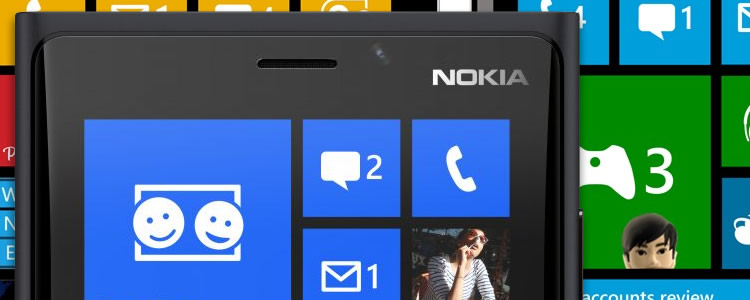Since Microsoft and its manufacturing partners introduced Windows Phone 7, they have tried in vain to introduce a legitimate competitor to the Apple iPhone. They have also failed to unseat an army of Android devices that have been more lucrative for the same manufacturers who first embraced Windows Phone. Nokia's entry was an all-in gamble that was supposed to platform among the elite of smartphones, but being the most popular of the bunch didn't translate to commercial or critical success.
In the Nokia Lumia 920, Windows Phone 8 has a worthy competitor to iOS and Android. It continues the design philosophy that made the original Lumias the most popular Windows Phone handsets by having eye-catching colors and distinguishing features. It also features brand new software that is faster and more robust than its predecessor. Will a winning hardware foundation and vastly improved software secure the Lumia 920 a place among the elite?

Hardware, Key Features
The Nokia Lumia 920 isn't guaranteed to earn millions of sales, but the phone is sure to garner plenty of looks thanks to its bold color choices. Available in a matte cyan finish or a high gloss red or yellow, the bold color choices that wrap around a black face stand out from a crowd.
People who want a more conservative color scheme can opt for a matte black or glossy white model, but even those will be distinguishable because of the Lumia 920's body. The phone measures 134.62mm x 70.87mm x 10.67mm (5.13in x 2.79in x 0.42in). Arriving in an era where smartphone vendors are racing to make each phone thinner than the last, the slightly curved back of the Lumia 920 protrudes far enough to make this a relatively thick phone.
It's also on the hefty side by topping the scale at 184.27g (6.5oz). The Lumia 920 is the heaviest flagship phone to hit the market in quite some time. The phone's weight is not excessive, but there's no getting around that this phone carries extra ounces that the Apple iPhone 5 and Samsung Galaxy S III do not.

The Lumia 920 carries its weight well by still managing to introduce an attractive figure with solid hardware credentials. The top and bottom of the device are completely flat, so the Lumia 920 can stand up on a table or desk. Both sides curve as if the two sides were squished smoothly meet in the back and give shape to the phone. The left side is a blank slate but the right side has volume buttons, a button to turn the device on or off, or take a photo. The bottom houses a microUSB slot and a pleasingly loud speaker, and the top has a 3.5mm headphone jack and a SIM door that's accessible by a key included in the box.
In an effort to make an equally attractive display, Nokia built the Lumia 920 to have a 4.5-inch screen with PureMotion HD+, ClearBlack, Sunlight Readability Enhancement, and Corning Gorilla Glass 2.0. To put those clever brand names and marketing terms into plain English, the Lumia 920 displays bright colors and deep blacks accurately, and animation and video move smoothly across the screen without any drops in quality. The Sunlight enhancement works as advertised and does a very good job of combating the glare or lack of visibility that occurs on sunny days. The screen adjusts outdoors to make content readable even under direct sunlight. The curved glass reduces the shock of impact of drops or scratches, and a touch panel with increased sensitivity makes the device operable even when wearing gloves.
While Windows Phone 7 was a temporary stopgap to modernize Microsoft's smartphone operating system, Windows Phone 8 is truly a whole new experience. Modern UI, formerly known as Metro, is a flexible interface that is a comfortable departure from Android and iOS. It's easy to make sense of the UI, which relies on Live Tiles as its main feature. Live Tiles are akin to Android widgets because they provide updates and shortcuts on the home screen. Rather than show an icon for an email account, it shows the icon and the number '14' to indicate that there are 14 unread messages. Tiles can also show top stories from CNN, tweets from friends, or photos from a camera roll. Live Tiles can be repositioned, fit into themes with different colors, and adjusted to different sizes.
A 1.5 GHz dual-core processor and 1GB of RAM make slick movements possible, but Windows Phone 8 doesn't always feel like it benefits much from the hardware increase. When browsing the home screen or loading system apps, things snap at a reasonable pace; however, there's a considerable delay when loading apps. Users should become accustommed to seeing the word "Loading" because it appears frequently. Whether this is the fault of the OS or poorly coded apps from developers, many news apps like ESPN, CNN, and Entrance spend too much time displaying loading or splash screens before actually displaying content. Most apps move quickly once loaded, but the slow start-up times pop-up often enough to become an annoyance.

Not all apps are a letdown. Nokia delivers some interesting mapping solutions like City Lens, an augmented reality app that showcases famous landmarks and nearby points of interest. It also includes a very powerful Maps app with offline turn-by-turn navigation and lots of data from across the globe. Windows Phone provides added privacy with Kid's Corner, a sandboxed section of the phone where guests can only access pre-approved apps, games, and songs. These built-in software features are equal to, and arguably better than, what's offered on other platforms.

